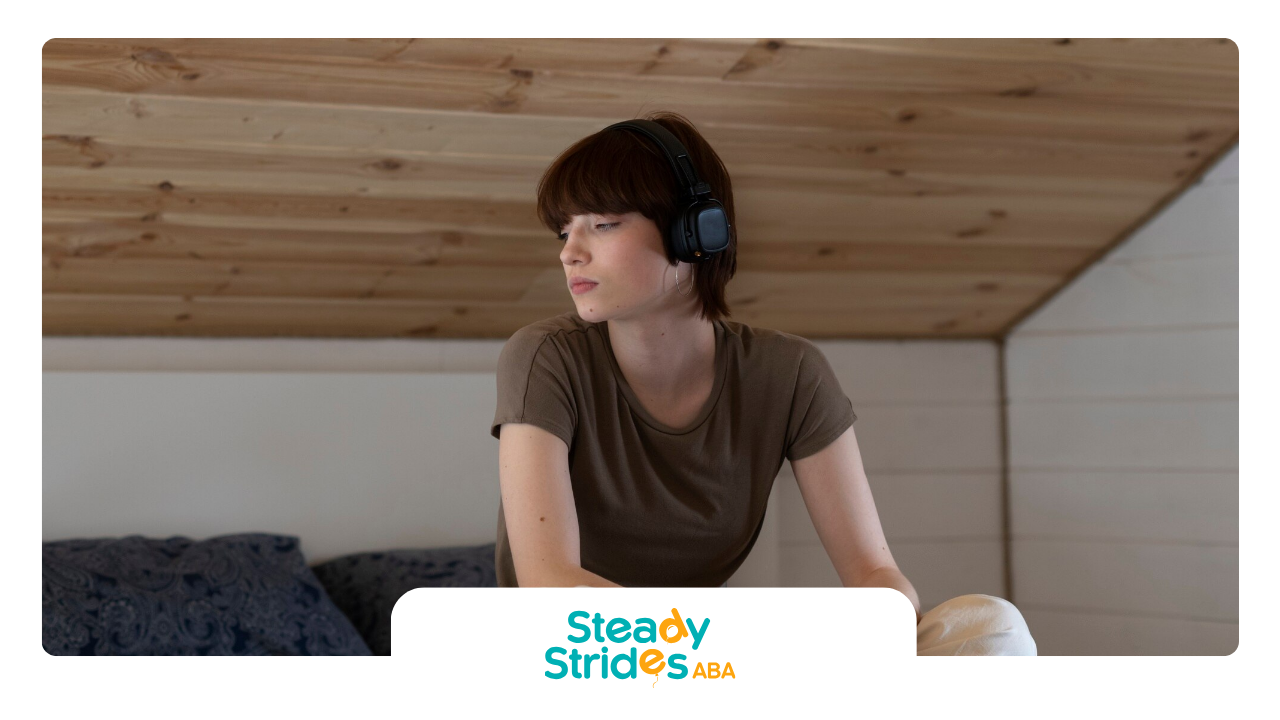Understanding Autism in Teens
In adolescence, the signs and symptoms of autism can evolve, requiring a keen understanding and new approaches to support. This section explores key indications of autism during these years and the crucial role of late diagnosis.
Signs and Symptoms in Adolescence
As teenagers navigate increasing academic and social demands, signs of autism may become more evident. Raising Children Network highlights that pre-teens and teens with autism can exhibit unique verbal and nonverbal communication patterns when interacting with others. They may struggle more with complex schoolwork, additional responsibilities, and challenging social relationships.
Key social communication signs at this age include:
- Communication Differences: Difficulty understanding and using verbal and nonverbal cues in social situations.
- Relationship Challenges: Problems with forming and maintaining relationships, often leading to social isolation.
- Emotional Expression Difficulties: Struggles with expressing emotions clearly, which can result in frustration or intense low moods.
Importance of Late Diagnosis
Late diagnosis of autism is common, particularly among teenagers who are 'high functioning' or academically capable. This phenomenon is more pronounced in girls, who might often mask their symptoms by mimicking neuro-typical behaviors. A late diagnosis can offer clarity and access to appropriate support and interventions, which can be critical during the tumultuous teenage years.
Understanding the increased risk of comorbid mental health disorders is essential. Autistic teens are more likely to experience depression and anxiety compared to their neuro-typical peers. A PMC study indicates that 42% of young autistic individuals face additional mental health challenges at rates significantly higher than their typically developing counterparts.
For parents and caregivers, recognizing these late onset signs and seeking an accurate diagnosis is vital. Establishing tailored therapy plans such as applied behavior analysis for teenagers and involving the entire family can promote better outcomes and support the teenager in navigating adolescence successfully.
For more specialized services and techniques, review ABA therapy benefits for teenagers to understand how targeted interventions can support behavioral and cognitive development during these critical years. These resources can provide detailed steps for personalizing treatment plans and ensuring the overall well-being of teens with autism.
Therapy Options for Teens with Autism
Applied Behavior Analysis (ABA)
Applied Behavior Analysis (ABA) is widely recognized as the gold standard in autism treatment. This therapeutic approach focuses on improving a broad range of skills, including communication, socialization, and reducing challenging behaviors. ABA therapy employs data-driven techniques to teach new skills and reduce problem behaviors, making it highly individualized.
Key features of ABA include:
- Assessment: Individualized assessment of the teen's abilities and challenges.
- Goal-setting: Specific, measurable goals tailored to the individual's needs.
- Intervention: Data-driven interventions to teach new skills and reduce problematic behaviors.
- Monitoring: Continuous monitoring and adjustment of the therapeutic approach based on progress.
Cognitive Behavioral Therapy (CBT)
Cognitive Behavioral Therapy (CBT) is another effective therapeutic approach for teens with autism, especially those who experience anxiety, obsessive behaviors, or depression. CBT provides practical tools to manage emotions, reduce anxiety levels, and develop coping strategies. This structured therapy focuses on teaching emotional regulation and improving behavior.
Key aspects of CBT include:
- Identifying Triggers: Understanding what causes anxiety or stress.
- Coping Strategies: Developing techniques to deal with these triggers effectively.
- Behavioral Interventions: Teaching skills to replace negative behaviors with positive ones.
- Emotional Regulation: Learning to manage emotions in various situations.
Occupational Therapy (OT)
Occupational Therapy (OT) is invaluable for teens with autism who struggle with sensory processing disorders, fine and gross motor skills, and daily living activities. Occupational therapists work to enhance independence and overall quality of life for individuals with autism. For tailored strategies to improve daily living skills, explore our section on ABA therapy techniques for adolescents.
Key components of OT include:
- Sensory Integration: Techniques to help with sensory processing challenges.
- Motor Skills Development: Activities to improve fine and gross motor skills.
- Daily Living Skills: Teaching skills necessary for independence in daily activities.
- Environment Adaptation: Modifying the environment to better suit the needs of the teen.
These therapy options form the cornerstone of a comprehensive treatment plan for teenagers with autism. By choosing the right therapy, personalized to the teen's needs, families can effectively support their loved ones on their journey toward improved skills and a better quality of life.
Tailored Therapy Approaches
Personalizing Treatment Plans
Creating personalized treatment plans is essential for effective teenage autism therapy options. Each individual with autism has unique needs, strengths, and challenges that must be considered when devising a therapy strategy. An initial assessment is crucial to identify these aspects and set specific goals for therapy.
A personalized treatment plan may include a combination of therapies such as Applied Behavior Analysis (ABA), Cognitive Behavioral Therapy (CBT), and Occupational Therapy (OT). For instance, a teen facing difficulties in language development may benefit from speech therapy, while those with motor skill challenges might require physical therapy.
| Therapy Type | Purpose | Possible Inclusions |
|---|---|---|
| ABA | Behavior | Positive reinforcement, social skills |
| CBT | Mental Health | Anxiety, depression, coping strategies |
| OT | Daily Function | Sensory integration, motor skills |
| Speech Therapy | Communication | Language development, social cues |
| Physical Therapy | Motor Skills | Coordination, strength |
Family Involvement in Therapy
Family involvement is a cornerstone of effective autism therapy. Active participation from parents and caregivers can significantly enhance the outcomes of therapeutic interventions. ABA therapy, for example, emphasizes the importance of consistency, and parents play a crucial role in applying ABA strategies at home.
Parents and caregivers are often included in the therapy sessions to learn specific techniques that can be applied in daily life. This ongoing involvement helps to ensure that the benefits of therapy extend beyond the clinical setting, fostering a supportive environment at home.
Involvement may include:
- Attending therapy sessions
- Implementing strategies recommended by therapists
- Monitoring progress and providing feedback
- Participating in support groups
Parents can also assist in addressing co-occurring mental health issues such as anxiety and depression, which are more prevalent in autistic individuals. Family support can play a crucial role in the efficacy of interventions aimed at improving mental health.
Alternative Therapy Approaches
Exploring alternative therapy approaches for teens with autism offers a variety of options to complement traditional treatments. These therapies provide additional tools for addressing the unique needs of adolescents on the spectrum.
Music Therapy and Sensory Integration
Music therapy and sensory integration are promising approaches that have shown positive results in enhancing communication and social skills in teenagers with autism. Music therapy uses the therapeutic benefits of music to address physical, emotional, and cognitive needs. For teenagers, this can mean playing instruments, singing, or engaging in movement activities to improve social interaction and alleviate anxiety.
Sensory integration therapy focuses on helping teens process and respond to sensory information more effectively. This might involve activities that challenge their ability to integrate sensory input, such as using swings, trampolines, or tactile objects. Therapists aim to improve sensory processing and, consequently, enhance an adolescent's daily functioning and engagement with their environment.
Acupuncture and Massage
Acupuncture and massage are known for their calming effects and potential benefits in managing symptoms associated with autism. Acupuncture involves inserting thin needles at specific points on the body to stimulate nerves, muscles, and connective tissue. This can help reduce anxiety and improve overall well-being in adolescents with autism.
Massage therapy, on the other hand, uses hands-on techniques to promote relaxation and relieve stress. For teenagers with autism, regular massage sessions can help reduce behavioral problems, improve sleep, and decrease hyperactivity.
Both approaches provide an alternative to traditional applied behavior analysis for teenagers, offering a holistic method to manage specific challenges.
Traditional Chinese Medicine (TCM)
Traditional Chinese Medicine (TCM) offers a range of therapies that include herbal medicine, acupuncture, and dietary modifications. An example of this is the Chanyi diet modification, which has shown significant improvement in parent-rated social problems and repetitive behaviors in children with autism.
TCM aims to restore balance and harmony within the body and may involve:
- Herbal Remedies: Custom herbal formulas are prescribed to address specific symptoms and improve overall health.
- Dietary Changes: Adjusting the diet to include or eliminate certain foods can aid in reducing symptoms. For instance, elimination diets such as gluten and casein-free diets are commonly used.
- Acupressure and Acupuncture: Both methods aim to stimulate specific points on the body to improve health and alleviate symptoms.
Ensuring the safety and efficacy of these treatments is crucial, as is integrating them with other therapy options like CBT or Occupational Therapy for a comprehensive approach to teenage autism therapy.
Specific Challenges and Interventions
Anxiety and Depression in Teens with Autism
Autistic teenagers often experience higher rates of anxiety and depression compared to their neurotypical peers. Studies indicate that around 42% of young autistic individuals have a comorbid mental disorder, which is two to four times higher than the general population. Addressing these mental health challenges is crucial for the overall well-being of autistic teens.
Psychoeducation and Coping Strategies
Psychoeducation plays a vital role in helping autistic teens understand their condition and develop effective coping strategies. Programs like Awareness and Care for My Autistic Traits (ACAT) have shown significant benefits. Adolescents and their parents participating in the ACAT program demonstrated improved knowledge of autism and reduced stigma related to treatment.
Effective coping strategies can include:
- Mindfulness exercises to manage anxiety
- Cognitive Behavioral Therapy (CBT) techniques for addressing negative thought patterns
- Participating in support groups for shared experiences and peer support
Role of Parents and Caregivers
Parents and caregivers play a crucial role in the therapy process for autistic teens. Their involvement is essential in reinforcing therapeutic techniques at home and providing emotional support. While the ACAT program showed that parents did not experience significant changes in their mental health or attitudes, they play a pivotal role in their child's progress.
Parental roles can include:
- Consistently applying Techniques taught in Applied Behavior Analysis (ABA) therapy.
- Engaging in family-oriented therapy sessions to create a supportive environment.
- Monitoring and identifying any additional challenges that may arise during adolescence.
Support from family members can significantly enhance the effectiveness of various therapy options.
| Therapy Approach | Primary Focus | Benefits |
|---|---|---|
| ABA Therapy | Behavioral skills | Enhanced communication, social skills, and reduced challenging behaviors |
| CBT | Mental health | Improved management of anxiety and depression |
| Psychoeducation | Understanding Autism | Better knowledge and coping strategies |
Holistic Approach to Teen Autism Therapy
A holistic approach to teenage autism therapy looks beyond traditional treatments to address all aspects of a teen's well-being. This includes mental health, complementary and alternative medicine (CAM), and ensuring that all interventions are safe and effective.
Addressing Mental Health Needs
Teenagers with autism often face mental health challenges like anxiety, depression, and obsessive behaviors. Cognitive Behavioral Therapy (CBT) is particularly effective in these cases. It equips teens with practical tools to manage emotions, reduce anxiety levels, and develop coping strategies.
| Mental Health Concern | Therapy Option | Benefits |
|---|---|---|
| Anxiety | CBT | Emotional regulation, reduced anxiety |
| Depression | CBT | Improved mood, better coping strategies |
| Obsessive Behaviors | CBT | Reduced compulsions, better behavior management |
Complementary and Alternative Medicine (CAM)
Several CAM therapies show promising results for teens with autism. Options include music therapy, sensory integration therapy, acupuncture, and massage. These therapies aim to improve sensory processing, reduce stress, and enhance overall well-being.
| CAM Therapy | Potential Benefits |
|---|---|
| Music Therapy | Improved communication, emotional expression |
| Sensory Integration | Better sensory processing, reduced overreactivity |
| Acupuncture | Reduced anxiety, improved focus |
| Massage | Relaxation, reduced stress |
Among popular CAM approaches, elimination diets like gluten and/or casein-free diets are widely used, with anecdotal reports of benefits.
Ensuring Safety and Efficacy
When exploring various therapy options, ensuring safety and efficacy is paramount. Applied Behavior Analysis (ABA) is considered the gold standard in autism treatment, using data-driven approaches to teach new skills and reduce problem behaviors.
Parents and caregivers should be actively involved in the therapy process for the best outcomes. Their roles are critical for providing continuity and emotional support, ensuring effective application of therapy strategies in daily life. This ensures a consistent and supportive environment, which is essential for successful therapy.
By combining traditional and alternative therapies under a holistic approach, therapy for teenagers with autism can address a broader range of needs and improve their quality of life. Before starting any new therapy, it's vital to consult healthcare professionals to ensure these options are safe and appropriate for the individual.
Conclusion
In conclusion, supporting teens with autism requires a multifaceted, personalized approach that adapts to their evolving needs during adolescence. From foundational therapies like ABA, CBT, and OT to alternative options such as music therapy and Traditional Chinese Medicine, there are a variety of effective strategies available to help teens thrive. Parental involvement and early recognition of symptoms are key to creating a strong support system.
At Steady Strides, we specialize in designing tailored ABA therapy plans that empower teenagers with autism and their families. Reach out to us today to learn how we can support your teen’s journey toward growth, independence, and well-being.
Sources:
- https://raisingchildren.net.au/autism/learning-about-autism/assessment-diagnosis/signs-of-asd-in-teens
- https://pmc.ncbi.nlm.nih.gov/articles/PMC10485995/
- https://www.ncbi.nlm.nih.gov/pmc/articles/PMC4439475/
- https://pmc.ncbi.nlm.nih.gov/articles/PMC8085719/












